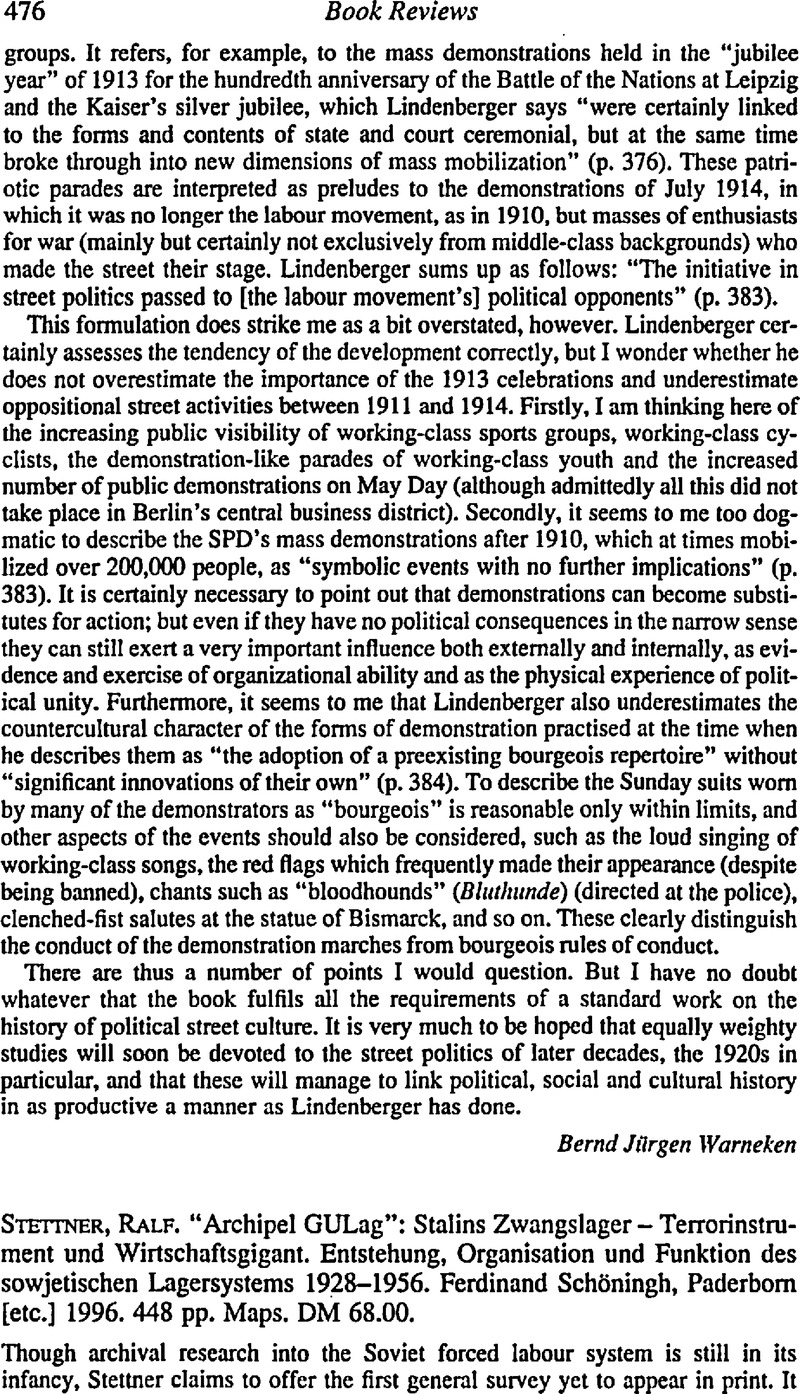No CrossRef data available.
Article contents
Ralf Stettner. “Archipel GULag”: Stalins Zwangslager – Terrorinstrument und Wirtschaftsgigant. Entstehung, Organisation und Funktion des sowjetischen Lagersystems 1928–1956. Ferdinand Schöningh, Paderborn [etc.] 1996. 448 pp. Maps. DM 68.00.
Review products
Published online by Cambridge University Press: 20 February 2009
Abstract

- Type
- Book Reviews
- Information
- Copyright
- Copyright © Internationaal Instituut voor Sociale Geschiedenis 1997
References
1 Conquest, Robert, The Great Terror (London, 1968)Google Scholar; Heller, Michel, Le monde concentrationnaire et la littérature soviétique (Lausanne, 1974)Google Scholar [German edition: Stacheldraht der Revolution. Die Welt der Konzentrazionslager in der Sowjetischen Literatur (Stuttgart, 1975)]; Legget, George, The Cheka: Lenin's Political Police (Oxford, 1981)Google Scholar; Jakobson, Mikhael, The Soviet Prison Camp System 1917–1934 (Lexington, 1993)Google Scholar. Bacon, Edwin, The Gulag at War. Stalin's Forced Labour System in the Light of the Archives (Basingstoke, 1994)Google Scholar is the first Western book on the Gulag to be based partly on – disappointingly brief – research in the Russian archives. See von Hagen's, Mark appropriately critical review in The Russian Review, 55 (1996), pp. 718–719CrossRefGoogle Scholar.
2 The text of the decrees can be found in Izvestiia, 18 and 21 February, 15 April and 17 May 1919. They were also published in Sobranie Uzakonenii (1919), no. 12, st. 130; no. 12, st. 124; no. 20, st. 235. The passage from Heller can be found at the top of p. 44 of Le monde concentrationnaire (and on pp. 54–55 of the German edition).
3 The debates and the texts appeared in Izvestiia on 18 February 1919. For the full text of speech, Dzerzhinsky's see Iz istorii Vserossiiskoi Chrezvychainoi komissii 1917–1921 gg. Sbornik dokumentov (Moscow, 1956), pp. 251–257Google Scholar. Sopinov, P.G., Abriss der Geschichte der Gcsamtrussischen Ausserordentlichen Kommission (1917–1922) (Berlin, 1979), pp. 153–154Google Scholar, contains just the brief eight-line passage on the need to introduce forced labour to which Stettner refers.
4 Bunyan, James, The Origin of Forced Labor in the Soviet State 1917–1921: Documents and Materials (Stanford, 1967), pp. 71–75Google Scholar.
5 Danilov, V.P. and Krasil'nikov, S.A. (eds), Spetspereselentsy v zapadnoj Sibiri (Novosibirsk, 1992–1996), 4 volsGoogle Scholar.
6 See p. 133. Further evidence of lacunae in the documentation can be found on pp. 117–118, 133, 152, and 158.


